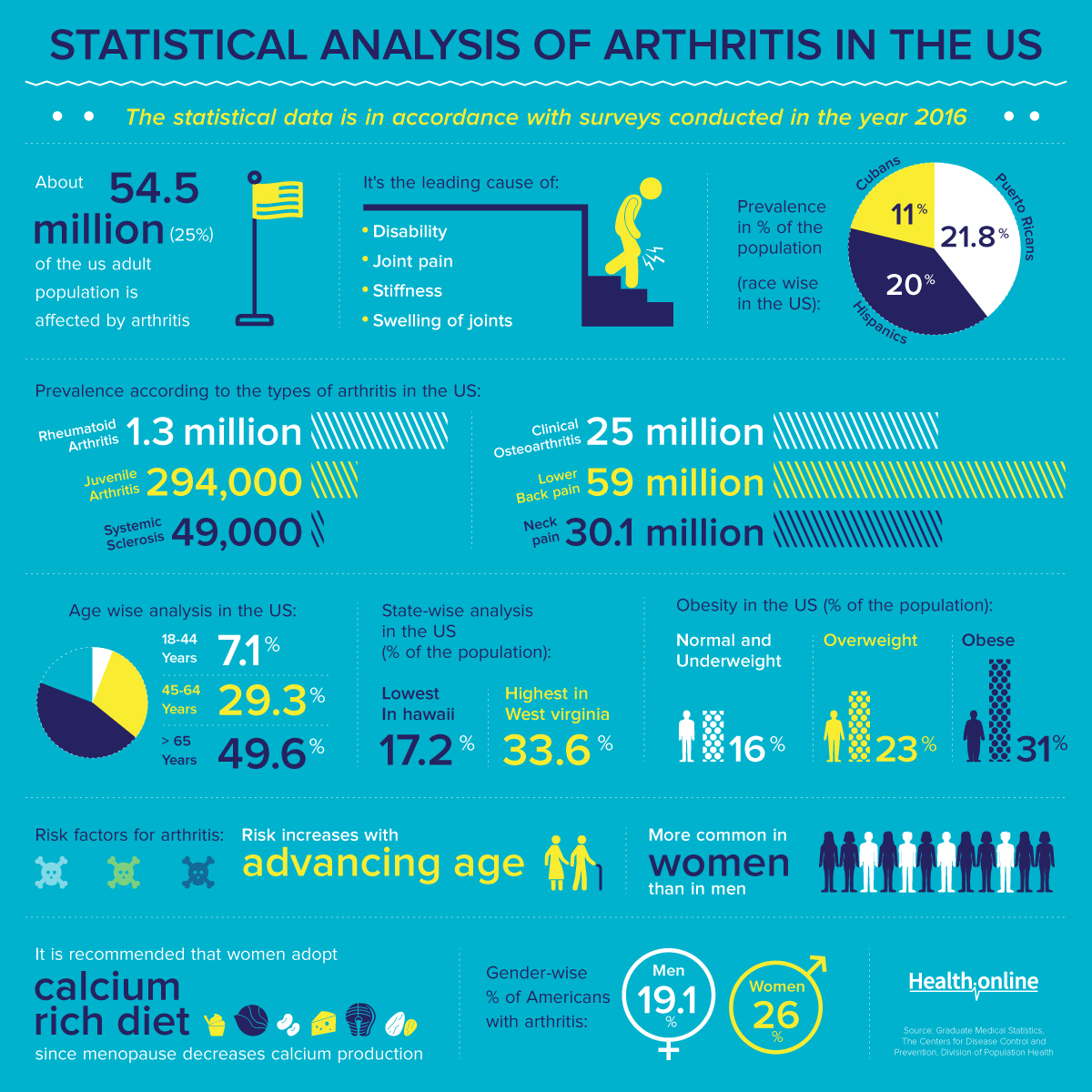
Overview of Rheumatoid Arthritis
Prevalence of Rheumatoid Arthritis
Worldwide, the prevalence of RA is believed to be between 0.4 and 1.3 percent of the population. The incidence of rheumatoid arthritis in the United States is a little lower than the international average. In 2005, 1.5 million Americans—about 0.6 percent of the population were diagnosed with RA. In the United States, between 1995 and 2007, 41 people out of 100,000 were diagnosed with the condition. While RA can develop in the younger years, the likelihood of developing rheumatoid arthritis increases with age. The chances of being diagnosed with this disorder increase after 40, peak at 74 years of age, and then decline.
What is Rheumatoid Arthritis?
Rheumatoid arthritis (RA) is an autoimmune disorder of the joints that can lead to chronic pain and permanent disability if not treated properly. In rheumatoid arthritis, the patient’s own body basically attacks itself via the components of the immune system known as antibodies. Everyone has antibodies, which are designed to ward off infection and evict anything that is foreign to the body. In the RA patient, however, these antibodies mistake healthy tissues of the joint for enemies and attack those cells leading to a breakdown of the joint integrity.
RA, in its mildest form, involves inflammation of the joints that can impede movement and make even simple movements very painful. The Centers for Disease Control define rheumatoid arthritis by the presence of inflammation in five or more joints. At its worst, RA attacks the patient’s skin, bones, heart, lungs, liver, and lymphatic system.
Some people diagnosed with rheumatoid arthritis will not get worse over time. A few people are diagnosed with this disorder based on one flare up that does not recur. Other patients have periodic flare ups over the course of their lives, but the disease does not advance to disability or organ dysfunction.
In many patients, however, rheumatoid arthritis is a progressive disease, meaning it gets worse over time, especially if not caught early. Patients with rheumatoid arthritis routinely report flare ups of the disease. During these flare ups, the symptoms are much worse, even causing short-term disability, but, after a few days or weeks, the worst symptoms subside.
There is currently no cure for rheumatoid arthritis. However, the progress of the disease can be slowed down with appropriate medication. Pain and other symptoms can be improved with lifestyle changes, diet, and medications. The outlook for someone with rheumatoid arthritis is much better if the condition is diagnosed early. So it is important for people who are at risk, especially people over fifty, to monitor their symptoms and be aware of the signs of RA.
It is important to distinguish rheumatoid arthritis from osteoarthritis. Though the symptoms may be quite similar, especially in the early stages of the disease, they are very different diseases with different trajectories. Rheumatoid arthritis is a systemic disease which potentially jeopardizes almost every part of the patient’s body and it requires a different course of treatment.

Progression of Rheumatoid Arthritis
Patient outlook
Rheumatoid arthritis affects patients in vastly different ways. It can present as a mild annoyance to a life-threatening and disabling condition. It is nearly impossible to predict what course the disease will take when it is first diagnosed. In early stages of RA, most patients’ symptoms will be very similar. From that point on, ninety-five percent of RA patients will experience some joint pain and swelling in cyclical flare-ups, probably throughout the patient’s life. These symptoms can often be well managed by steroids and NSAIDS while Disease-modifying anti-rheumatic drugs prevent the disease from progressing to the point of disability. An unfortunate five percent of RA patients, however, will become seriously disabled. This article cannot emphasize too much the importance of early detection and treatment of rheumatoid arthritis.
Future outlook
Great strides have been made in identifying the genetic markers that predispose people to rheumatoid arthritis. There is every reason to be optimistic that further genetic research will reveal more about the nature of the disease and result in newer and even more effective avenues of treatment




